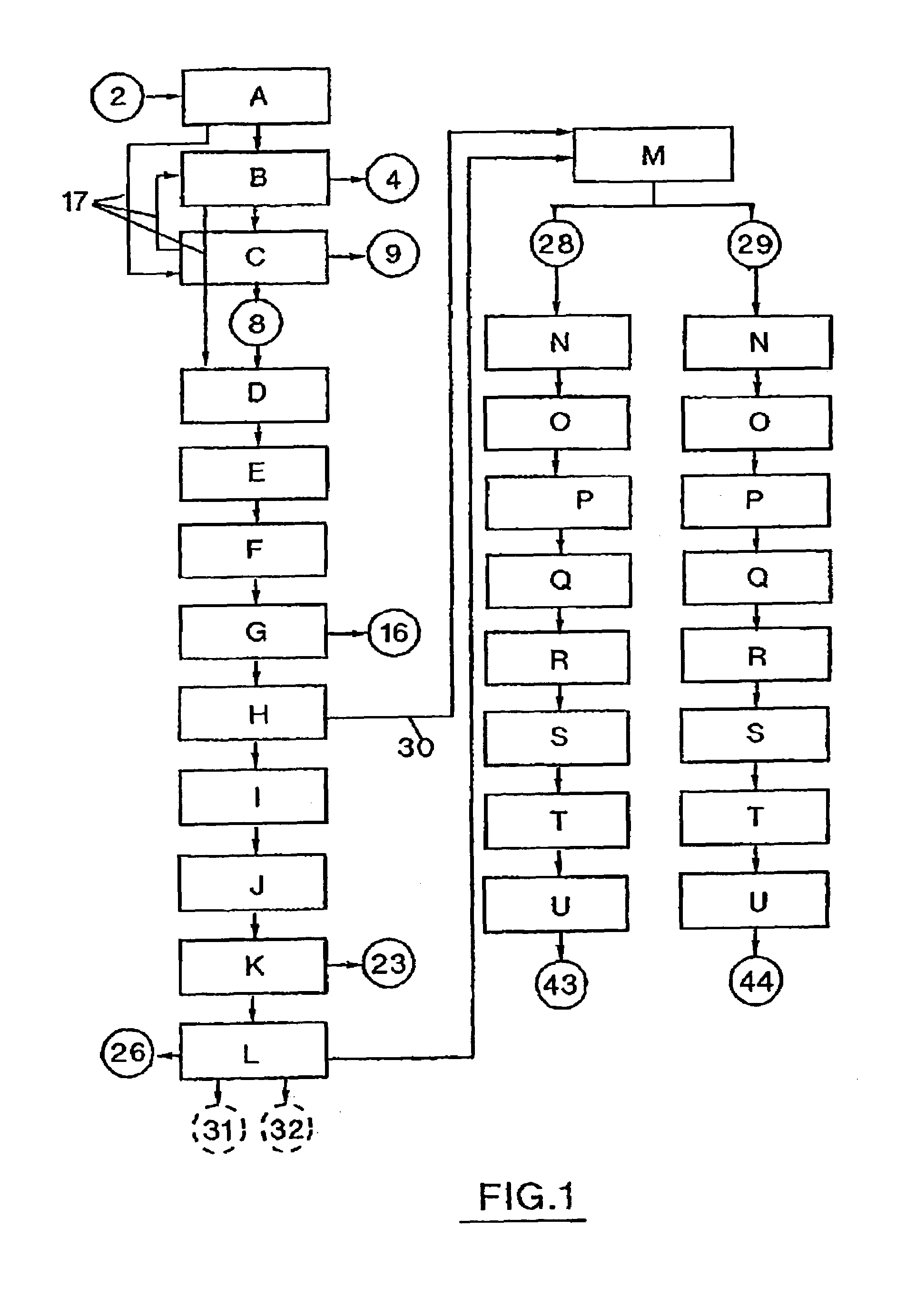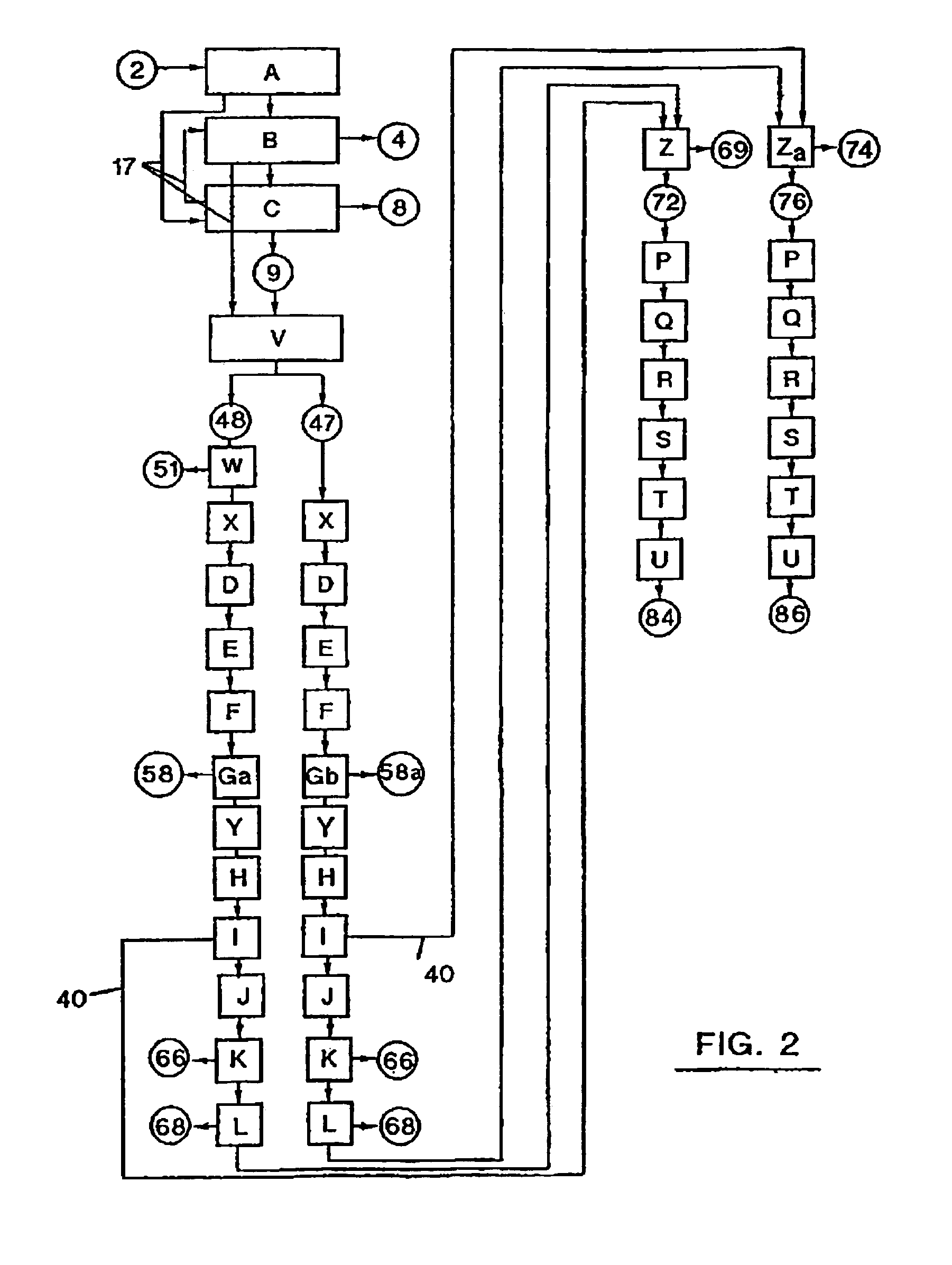Method and plant for separating polymeric materials
a polymer material and plant technology, applied in wet separation, food science, applications, etc., can solve the problems of insufficient quality of polymer materials obtained, no cleaning apparatus for polymer materials, and none of the methods cited above give satisfactory results in separating polymer materials from waste streams
- Summary
- Abstract
- Description
- Claims
- Application Information
AI Technical Summary
Benefits of technology
Problems solved by technology
Method used
Image
Examples
Embodiment Construction
[0025]The present invention is directed to methods for separating recyclable polymer materials from ground waste streams. Preferred embodiments of the invention are described below in conjunction with the drawings provided herein. The preferred embodiments disclosed herein are to be considered exemplary of the principles of the present invention and are not intended to limit the invention to the embodiments described or illustrated. Various modifications will be apparent to those skilled in the art without departing from the spirit or scope of the invention disclosed herein.
[0026]Preferably, a mechanical separation step is followed by a first density separation step, then a step of cleaning polymer materials and a second density separation step. A mechanical separation step followed by a first density separation step, then a second density separation step and a step of cleaning polymer materials is also proposed. Alternatively, a mechanical separation step is followed by a step of c...
PUM
| Property | Measurement | Unit |
|---|---|---|
| Fraction | aaaaa | aaaaa |
| Fraction | aaaaa | aaaaa |
| Fraction | aaaaa | aaaaa |
Abstract
Description
Claims
Application Information
 Login to View More
Login to View More - R&D
- Intellectual Property
- Life Sciences
- Materials
- Tech Scout
- Unparalleled Data Quality
- Higher Quality Content
- 60% Fewer Hallucinations
Browse by: Latest US Patents, China's latest patents, Technical Efficacy Thesaurus, Application Domain, Technology Topic, Popular Technical Reports.
© 2025 PatSnap. All rights reserved.Legal|Privacy policy|Modern Slavery Act Transparency Statement|Sitemap|About US| Contact US: help@patsnap.com



